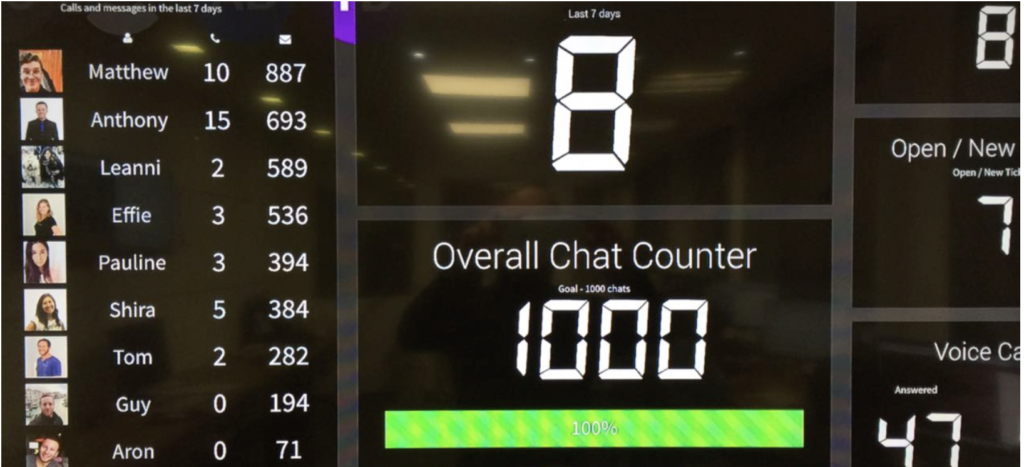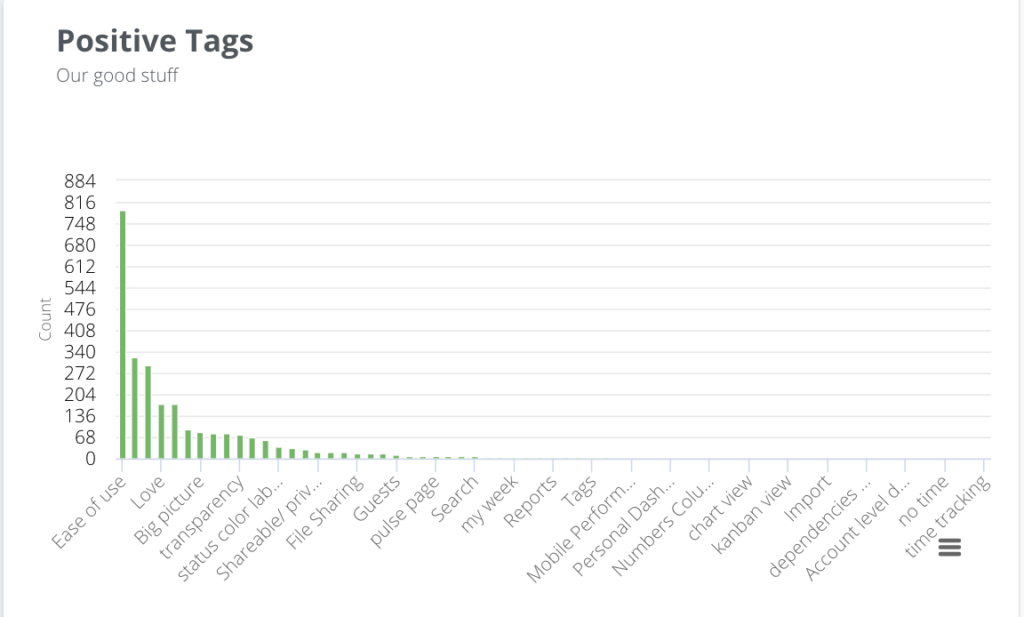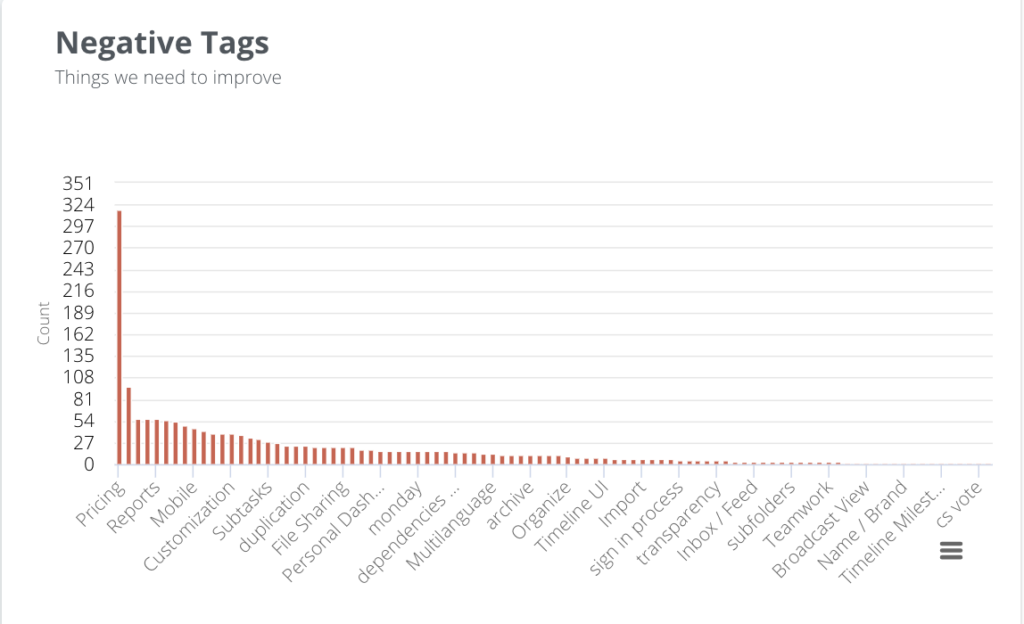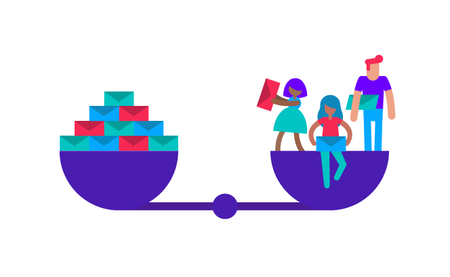No one likes being on hold and no company wants to be associated with the dreadful experience of being on hold. This sentiment is what motivated the company to set the Customer Experience (CX) KPIs. monday.com’s Senior CX Manager Shahar Sasson joined us to explain how they took those KPIs, and cut a 1,038 hold time to 7 minutes.
Keeping the Past (Mistakes) In the Past
It’s May 2016, and co-founder Eran Zinman just got off the phone with a friend who chased the CX team for four days to avail. Then, he sees an email from a customer whose system crashed the day before, and the CX team still hadn't responded.
This made Eran raise an eyebrow. He knew the CX team consisted of smart and motivated people, so these mishandled customers seemed out of place. Eran decided to investigate.
When he walked into the CX team's room, a ringing phone greeted him. The whole team had gone out to lunch.
Clearly, there was some miscommunication. Perhaps, it had to do with the fact that the team hadn't set any CX goals.
Taking the Plunge: How Do You Go From 1,038 Minutes to Just 7
Customers had questions and monday.com offered quality answers.
Slight issue, their response rate was so slow they might as well have sent them via carrier pigeon.
If the company's response rate was 1,038 minutes in May 2016, how did it drop to 10 minutes on the urgent queue in 2020 while improving its customer satisfaction score?
Cutting response time while maintaining quality
Pilling on the Problems
The CX team faced an uphill battle. Companies are constantly updating their product and acquiring new customers. At monday.com, at the time of the podcast recording, there were 23 CX Representatives, 3,000 new accounts per month, 5,000 monthly tickets (support requests) and they regularly released new features.
How do 23 Customer Success representatives answer thousands of tickets?
CX isn’t like fast food, it must be delivered fast but still offer excellent quality. When tickets come in by the thousands how do you ensure that every customer receives a warm and thorough response?
Quick Fix, New Problem
There is an effortless way to handle all these complications, such as making it nearly impossible for customers to open tickets. The select few that manage to submit a request will get quality responses fast because they might be the only ticket of the day. Alternatively, you can use bots to send automatic replies to everyone.
These are all common solutions, but the CX team views them as misguided solutions. Customers are assets, not nuisances. The more feedback you receive from your customers, the better. CX is a part of a company's brand. Chatbots might be instant, but monday.com wants customers to feel like the company cares about what they have to say.
Look Mom, No Hands!
The company uses a no-touch sales model. This means most of their customers never speak to a salesperson but found the product online and started using it. If and when customers speak to the company, they speak to CX representatives. If the representative made them laugh or rushed them off the phone that’s what they’ll associate with the company. This is why Eran perceives the CX team as the face of the company. Both he and Shahar emphasized that this is why CX representatives must be customer-centric and have both high IQs and EQs.
Making opening a ticket as assessable as possible while ensuring quick and quality human responses seems like a catch-22. So how do does the company try to grab onto the horns of these challenges?
Making a Dash(Board) For It
The team did this by setting two KPIs dropping the urgent response rate to 10 minutes and maintains a high CSAT score of 9. To support these KPIs monday.com created an average response rate and customer satisfaction dashboard.

The CX team went from one dashboard to today's four dashboards:
1. The CX team’s main dashboard tracks their response rate and quality of their response. It is also color-coded so the CX team can see when they receive the most tickets and schedule shifts accordingly.

2. The webinar dashboard reflects how many customers watched them from start to finish. It also tracks the feedback each webinar receives.
3. The knowledge base dashboard tracks how accessible articles are to customers and their level of helpfulness.
4. The final dashboard, NPS, is popular amongst numerous teams including the Design and R&D. Net Promoter Score surveys how likely customers are to recommend a product to friends. At monday.com it also tracks what parts of the product customers like the most and the least so they can improve it.


Taking Control of Quality Control
CX dashboards reflect both their KPI to drop their response rate as well as their quality sub-KPI. The company ensures that all accounts receive a quality response by not differentiating between accounts. Whether customers are still on their free trial or pay hundreds of dollars a month, they receive the same treatment. Their secret recipe for keeping their responses fresh is never having a representative work on tickets all day long. Every CX representative works on side projects within the company. This way, their last ticket of the day is as friendly as the one they sent after their morning coffee.
The company uses professional education as a tool to ensure quality. This starts from the moment representatives join and receive a copy of Delivering Happiness by Tony Hsieh, the CEO of Zappos. The book, or what Shahar calls “monday.com's CX bible” helps new team members understand the company's CX mindset. This education continues with weekly peer review sessions where CX representatives offer each other feedback and advice on how to provide better answers faster.
CX team also lowers their response rate by preventing customers from opening tickets but in a good way. They make a conscious effort to make the information as accessible as possible. CX does this by adding articles to their knowledge base, creating instructional videos. The team recently revamped their knowledge base to make it more accessible and appealing for customers. Taking further control of their quality control, monday.com is now creating KPIs specifically for their knowledge base. The CX team ceaselessly look for ways customers can find the answers to their questions at their convenience.
Reaching Seventh Heaven and A 7 Minute Response Rate
Within six months of posting that first dashboard, their response rate plunged from 1,038 minutes to 50 minutes. That dashboard also revealed that the New York response rate was too slow. This led them to start adding team members based on data and not intuition.
Today, the company expanded their New York team and have since hired global employees whose time zone allows him to offer support when the other teams are less available. There is now someone handling tickets 24/7/365 so Eran will never walk into an empty room again. The company then went from 50 minutes to 10.
One (Team), Two (Responsibilities), Three
monday.com’s CX team has two responsibilities, representing the company to the outside world as well as representing customers within the company. Shahar once was answering tickets when a customer asked him why there wasn’t a way to “select all” within the product.
Shahar felt for the customer and asked the R&D team the same question. This led to the creation of the “batch actions” feature within the product. After representing customers' frustration, Shahar and the CX team served as the feature's ambassadors on behalf of the company to customers.
Setting, Meeting, and Surpassing Expectation
By constantly trying to tinker and improve their customers' CX experience, monday.com discovered the importance of setting the right expectations. In the past, CX replaced the name "support ticket" with "chat." Customers immediately went from being thrilled by their 7-minute response rate to disappointed that they didn’t receive an immediate answer. Chat conveys the start of an immediate conversation while ticket says, "we will get to you shortly." Tickets that receive quick replies leave customers thrilled, but when customers start chatting and don't receive an immediate answer, customers become frustrated. In CX, and in general, it's essential to set your customers’ expectations with the message you convey. That way you can surpass their every expectation.
What’s Waiting Around the Bend for CX?
monday.com continues to grow so the goal for a 10-minute response rate on the urgent queue and a CSAT score of 9 is only becoming more challenging. How can CX scale and even improve while the company continues to grow rapidly is a question that CX faces on a daily basis?
One of the ways CX hopes to do this is by expanding and improving their one-to-many CX tools. This includes their coffee talks, where like on a talk show, customers are interviewed on how they use the product so others can learn from them. They also want to improve the popularity of monday stories which are where customers can find use cases and templates.
If CX is the face of the company, then the company invests in ensuring that it’s not just a pretty face by hiring overqualified team members such as a former teacher and lawyer. At the same time, most of the startup echo system perceive CX representatives as entry level positions. Redefining the expectations from a common position in the job market makes finding relevant talent incredibly tricky. Their team is ceaselessly growing but how do they convince "traditionally overqualified" candidates to apply for the job? You might say that the Customer Experience team is looking for a way to successfully change the world's view of CX.
Tips for Creating a Customer Experience Team
- People first and foremost are the most essential part of creating a CX team. Make sure every team member is a coachable team player who is both intelligent and loves to help.
- Set clear KPIs everyone can follow.
- Create multiple problem-solving channels such as a dynamic knowledge base that will allow you to scale with your user base.
- Always look for new ways to improve as a team and as an individual, but don't do it based on hunches. Use the data your work generates.






